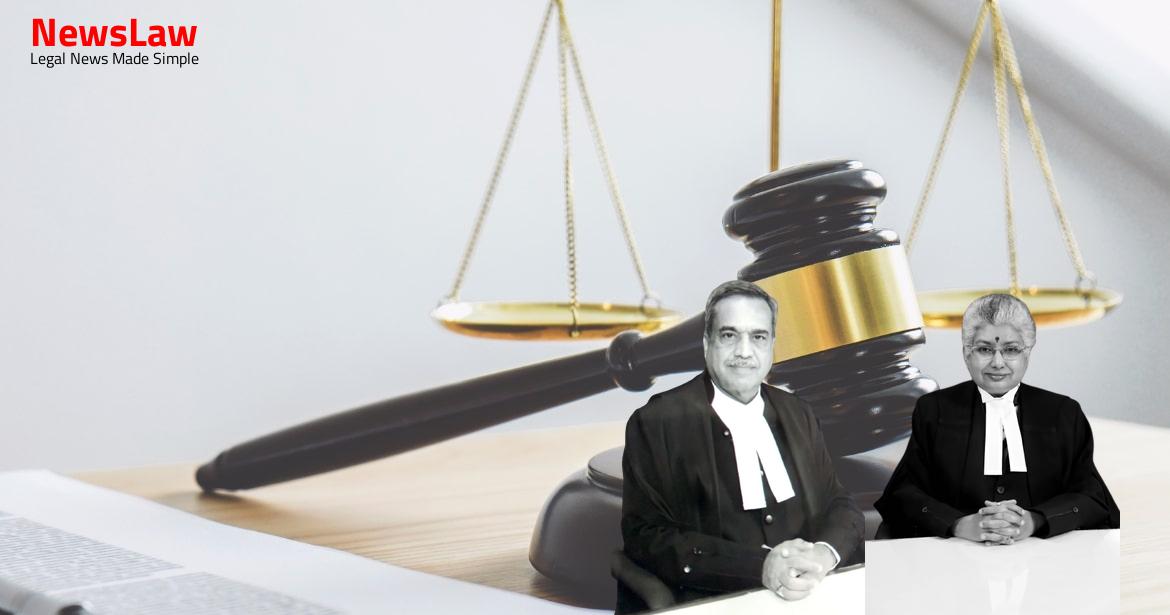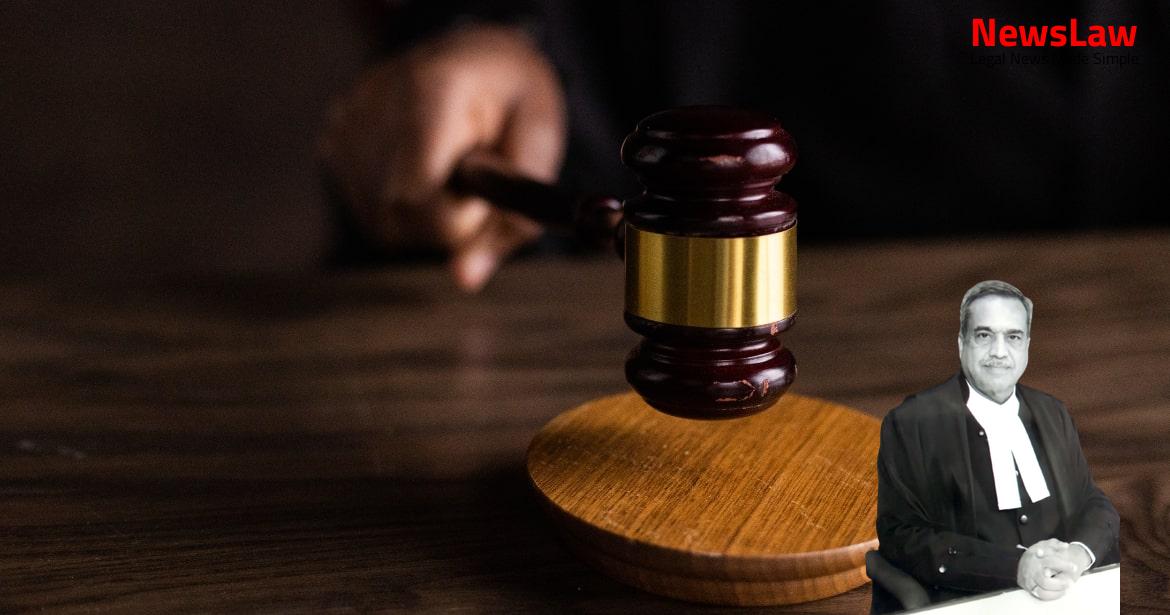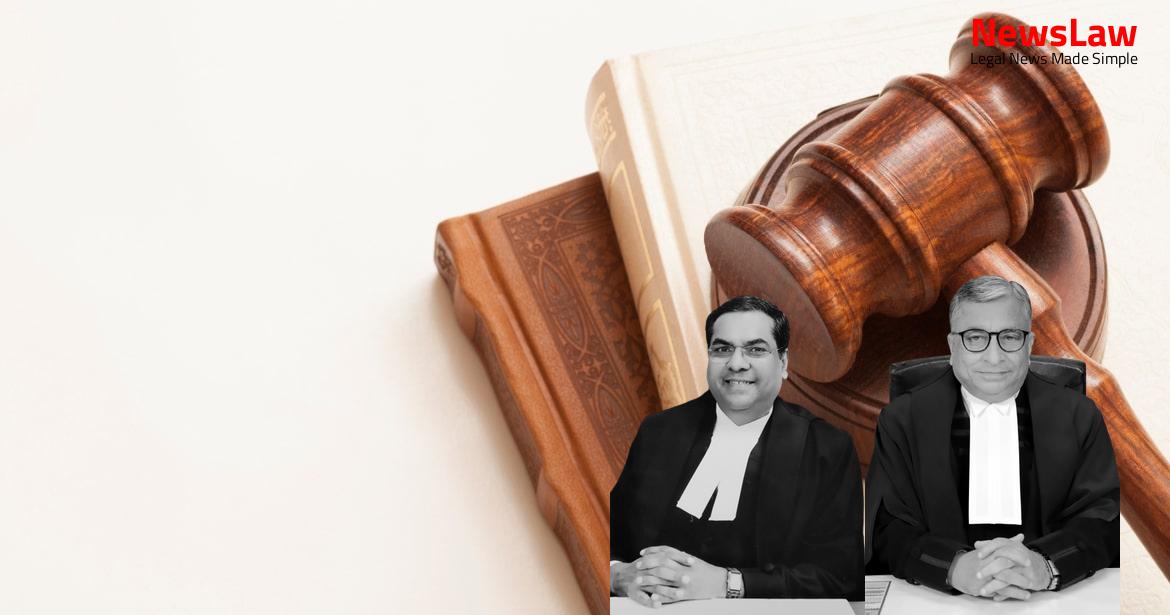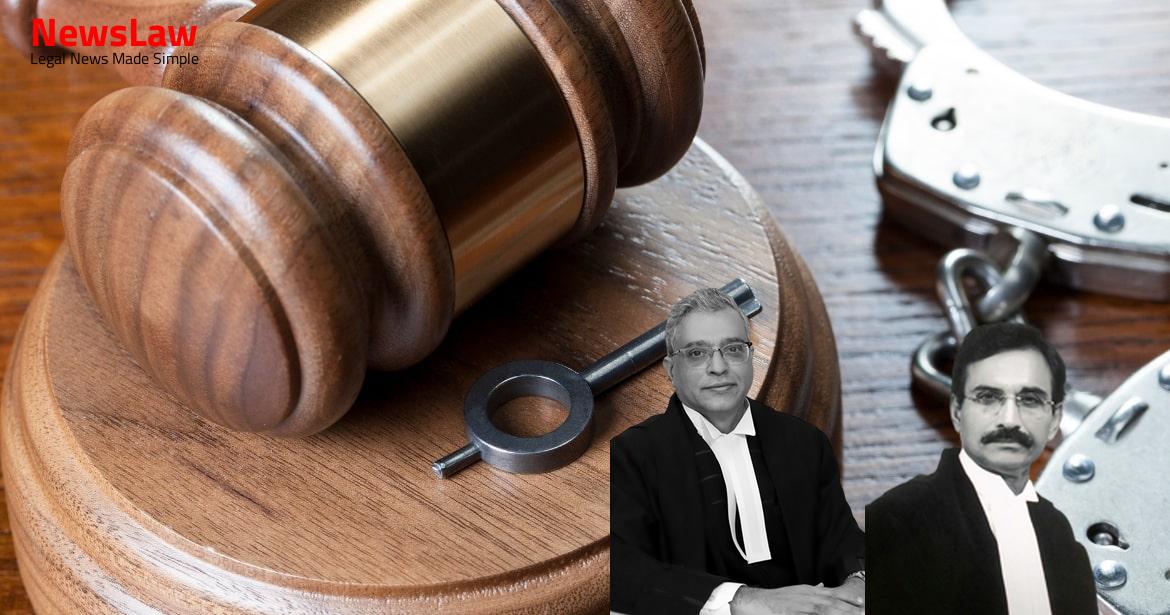Explore the meticulous legal analysis of the court regarding the powers under Section 14 of the SARFAESI Act. The judgment provides clarity on the extent and delegation of powers, setting a precedent for future cases. Delving into the in-depth legal reasoning aids in grasping the complexities of the law and its application in practical scenarios.
Facts
- The appellant, a borrower, is aggrieved by a High Court judgment interpreting Section 14 of the SARFAESI Act.
- The secured creditor, Capital First Limited, filed an application under Section 14 for assistance in taking possession of a secured asset.
- The application was not decided within the stipulated 30-day period, leading to the creditor seeking advancement of the decision.
- The creditor proceeded with recovery under the SARFAESI Act and took symbolic possession of the asset after facing delays in the application process.
- The High Court directed the Chief Metropolitan Magistrate to expedite the disposal of pending applications under Section 14.
- The High Court opined on the need to minimize the pendency of cases.
- The court then proceeded to consider strategies to reduce the backlog of cases.
- Efforts were made to address the issue systematically and effectively.
Also Read: Challenging Legal Presumptions in Negotiable Instrument Cases
Arguments
- Shri Malkan, the learned counsel for the borrower, argued that the High Court erred in allowing Additional Chief Metropolitan Magistrate and Additional District Magistrate to exercise powers under Section 14 of the SARFAESI Act.
- He contended that the High Court was mistaken in ruling that District Magistrate and Chief Metropolitan Magistrate are not persona designata for the purposes of Section 14 of the SARFAESI Act.
- Shri Malkan highlighted that the decisions of Gujarat High Court, Kerala High Court, and Calcutta High Court are contrary to the High Court judgment in question.
- Gujarat High Court held that District Magistrate and Additional District Magistrate are distinct authorities and that the powers under Section 14 are specifically conferred on these authorities.
- The power includes the requirement for the District Magistrate or Chief Metropolitan Magistrate to ensure compliance with the provisions of the Section.
Also Read: Legal Analysis of Admission Irregularities in Educational Institutions
Analysis
- The powers under Section 14 of the SARFAESI Act are considered to be ministerial in nature and do not involve any adjudicatory process.
- The Additional Chief Metropolitan Magistrate is at par with the Chief Metropolitan Magistrate in terms of exercising powers under the Cr.PC.
- The expression ‘Chief Metropolitan Magistrate’ in Section 14 of the SARFAESI Act is interpreted to include the Additional Chief Metropolitan Magistrate.
- The District Magistrate, Chief Metropolitan Magistrate is not a persona designata for the purposes of Section 14 of the SARFAESI Act.
- The Additional District Magistrates are considered to have equal powers as the District Magistrates.
- The powers to be exercised by the Chief Metropolitan Magistrate and Additional Chief Metropolitan Magistrate are considered equal under the Cr.PC.
- The steps to be taken by the Chief Metropolitan Magistrate for possession of secured assets are ministerial and do not involve adjudicatory functions.
- The SARFAESI Act aims to empower financial institutions to realize assets efficiently and manage liquidity issues.
- The SARFAESI Act facilitates expeditious disposal of applications under Section 14 to ensure timely recovery of loans.
- The appellant borrower has challenged the High Court’s decision which held that District Magistrate and Chief Metropolitan Magistrate are not persona designata for the purposes of Section 14 of the SARFAESI Act.
- The High Court ruled that the expression ‘District Magistrate’ and ‘Chief Metropolitan Magistrate’ include Additional District Magistrate and Additional Chief Metropolitan Magistrate for the purposes of Section 14.
- The High Court’s decision was based on the belief that the powers under Section 14 are executionary in nature and do not involve quasi-judicial functions, thereby allowing Additional Chief Metropolitan Magistrate to exercise these powers.
- Contrary views from other High Courts were discussed, including the Gujarat High Court’s decision in the case of Pushpa Devi B Jain Vs. Indian Overseas Bank which emphasized the importance of CMM/DM being the competent authorities to exercise the powers under Section 14.
- The Gujarat High Court also relied on its previous judgment in the case of Shivam Water Treaters P. Ltd. Vs. Authorised Officer, State Bank of India, which highlighted the limitations on delegating powers under Section 14, specifically ruling that the Chief Metropolitan Magistrate does not have the jurisdiction to empower the Additional Chief Metropolitan Magistrate for cases under the Securitisation Act.
- The jurisdiction and powers of every Metropolitan Magistrate extend throughout the metropolitan area.
- The High Court can designate a Judicial Magistrate of the first class in any sub-division as the Sub-divisional Judicial Magistrate as needed.
- The District Magistrate or Chief Metropolitan Magistrate can authorize their subordinate officers to take possession of assets and documents related to them for compliance with the SARFAESI Act.
- The High Court appoints the presiding officers of Courts of Judicial Magistrates.
- The High Court also appoints the Chief Judicial Magistrate and Chief Metropolitan Magistrate for districts and metropolitan areas, respectively.
- The Chief Metropolitan Magistrate and Additional Chief Metropolitan Magistrate are subordinate to the Sessions Judge.
- The High Court can define the extent of subordination of Additional Chief Metropolitan Magistrates to the Chief Metropolitan Magistrate for the purposes of the Criminal Procedure Code.
- The Chief Metropolitan Magistrate can make rules or give special orders regarding the distribution of business among Metropolitan Magistrates.
- The powers and duties of a Judge or Magistrate can be exercised by their successors-in-office as per the provisions of the Code of Criminal Procedure.
- The ratio decidendi of the judgment is based on the interpretation of the relevant laws and precedents.
- It determines the legal principle or rule of law upon which the decision is based.
- The ratio decidendi is the essential part of the judgment that sets a precedent for future similar cases.
Also Read: Legal Analysis: Driver Appointment Dispute
Decision
- The powers under Section 14 of the SARFAESI Act can be exercised by the concerned Additional Chief Metropolitan Magistrates and Additional District Magistrates.
- The Additional District Magistrates can exercise powers at par with the District Magistrates by delegation or special order.
- The present appeal was dismissed as it failed to prove its case.
- The decision in the case of Sub-Divisional Magistrate and Ors. in W.P. (C) No 3331/2007 was deemed not a good law and overruled.
- The appeal in question was therefore dismissed based on the above reasons.
Case Title: M/S R.D. JAIN AND CO. Vs. CAPITAL FIRST LTD (2022 INSC 754)
Case Number: C.A. No.-000175-000175 / 2022



